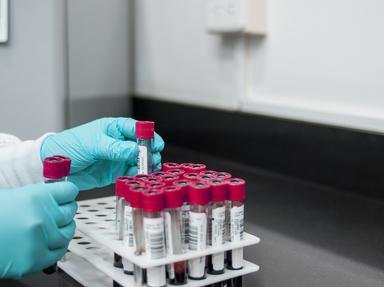Quiz Answer Key and Fun Facts
1. Organic chemistry is the study of compounds that contain the element carbon. It is found in various combinations with other elements to make a huge number of different chemicals. These millions of compounds can be conveniently organised and understood based on which common clusters of elements, or 'functional groups' they contain.
Perhaps the simplest group is the alkanes, containing only single-bonded carbon and hydrogen atoms. With a chain of three carbons, which chemical is shown in the picture?
2. An alkane chain is often seen as the base upon which other functional groups exist, and is therefore depicted in shorthand as merely a series of lines.
How many carbon atoms would you find in the molecule in the picture?
3. Also containing only carbon and hydrogen atoms, this functional group is distinguished from alkanes by the presence of a carbon-carbon double bond. What is the name of this group of molecules?
4. An 'alcohol' is a functional group in which a hydroxyl group (OH) is bonded to a carbon. When the word 'alcohol' is used in common speech, to which specific compound (shown in the picture) are we normally referring?
5. Related to the 'hydrochloric' and 'sulphuric' compounds found elsewhere in chemistry, the picture shows the simplest molecule containing which functional group?
6. Benzene is one of the most famous molecules in organic chemistry, but it carries a different name when appearing as a functional group in a larger compound.
Which molecule, containing two of these functional groups (and named as such), is shown in the picture?
7. Which set of compounds, the simplest of which is best known as an embalming agent, is exemplified by ethanal, the molecule shown in the picture?
8. Exemplified by alanine (shown in the picture), which five-letter word precedes 'acids' in the name of a set of doubly-functionalised biological molecules?
9. Consisting of a carbon-oxygen double bond in the middle of a chain, the picture shows the ketone functional group.
True or False - The letter 'R' in this structure represents an atom of radon.
10. Some of the most pungent molecules in the world of chemistry, thiols are analogous to alcohols, with the oxygen atoms replaced by an atom of which element?
Source: Author
pagea
This quiz was reviewed by FunTrivia editor
rossian before going online.
Any errors found in FunTrivia content are routinely corrected through our feedback system.
